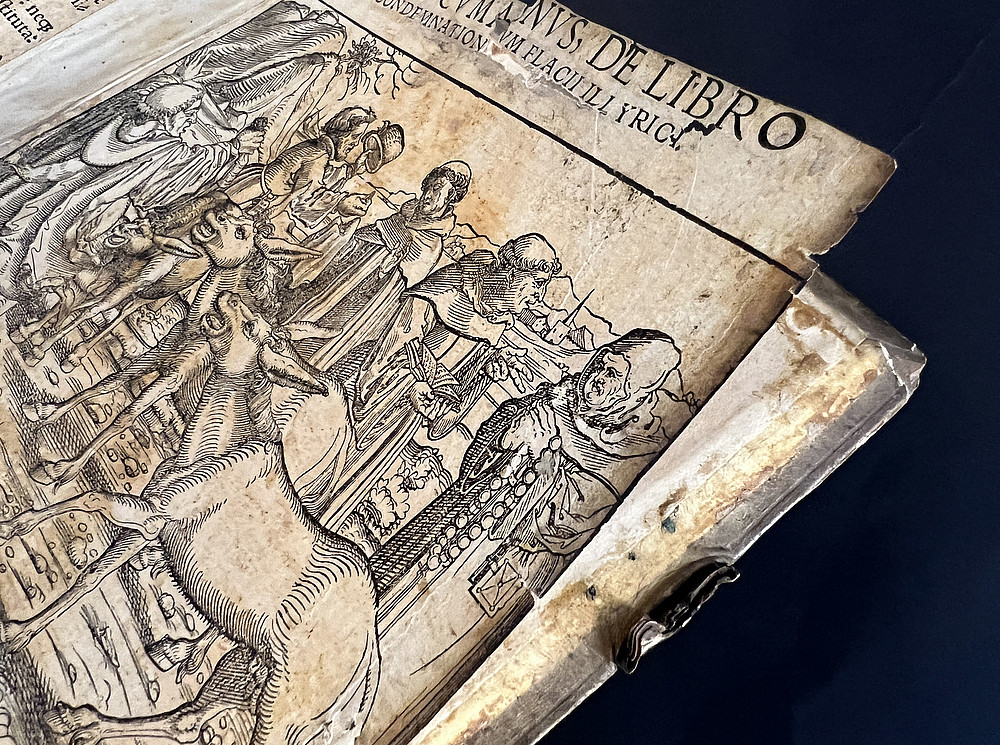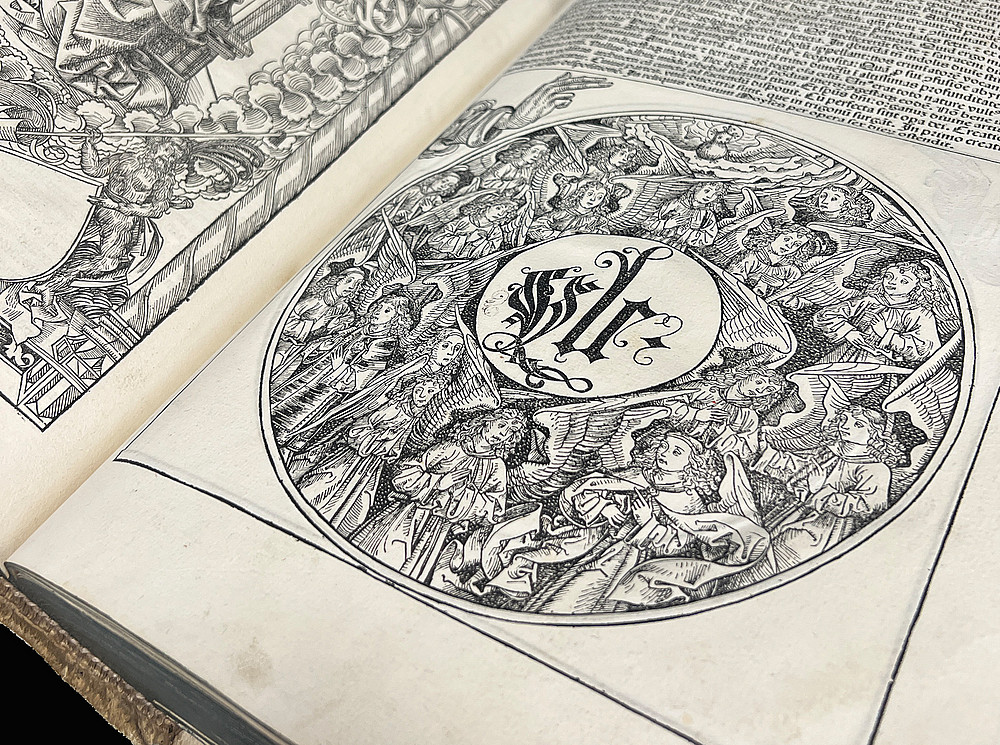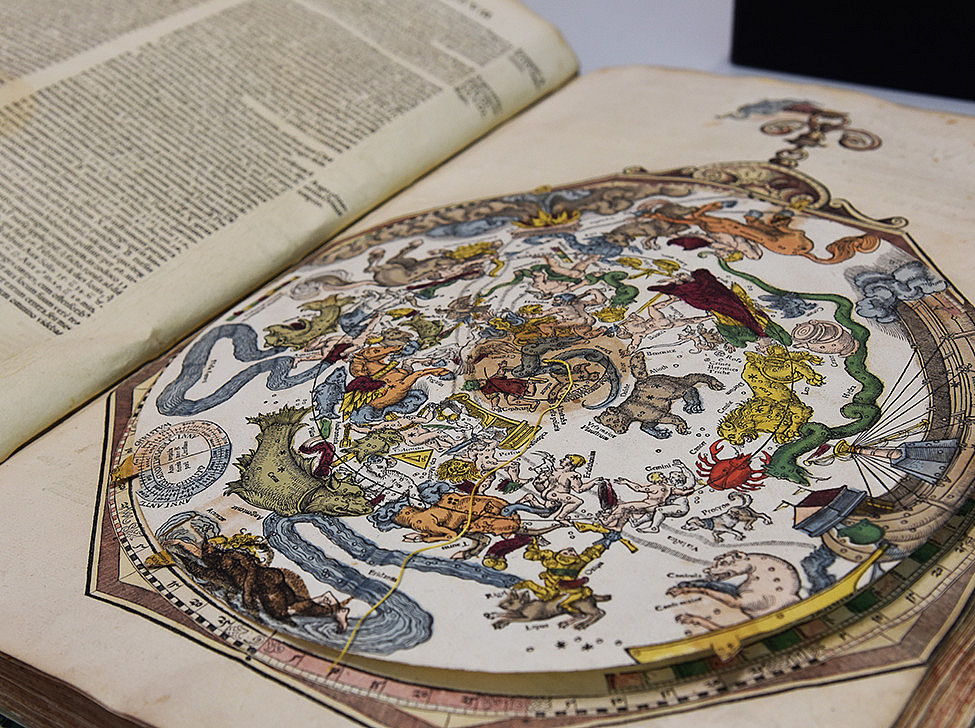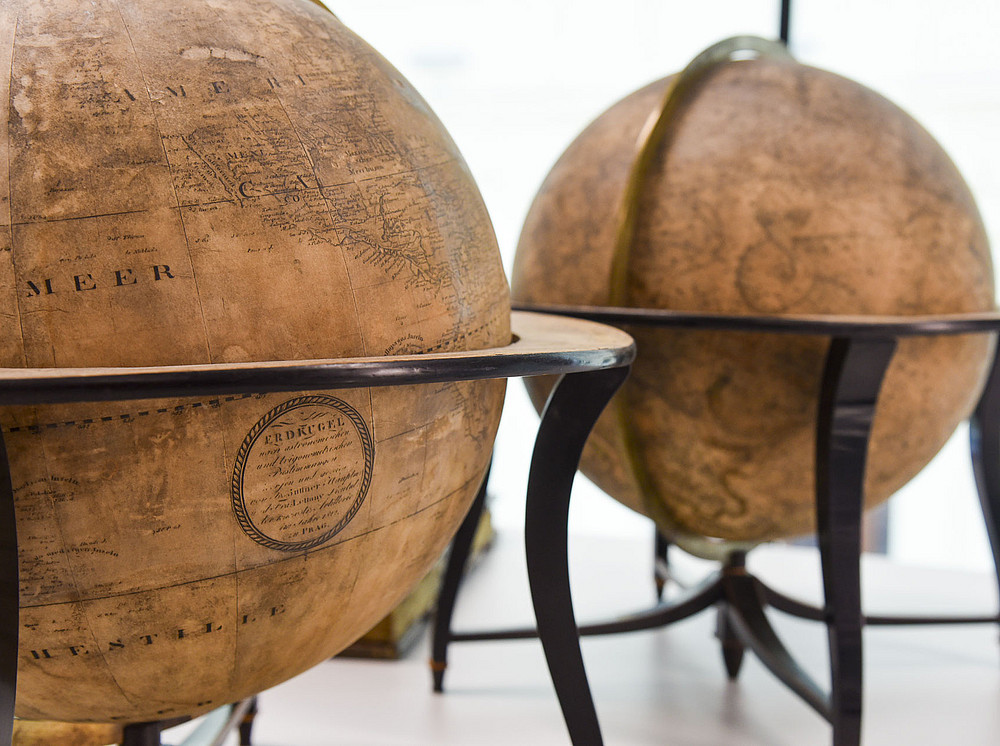Printed works
The printed materials form the most extensive part of the collections and, like the manuscripts, originate for the most part from the holdings of the abolished monasteries. They are fully accounted for by an image catalog (microfiche edition 1984. See: Old Holdings Main Library. Holdings from 1501-1982).
The recataloging of the 16th century book holdings is the focus of a project currently underway and will bring new insights into the early printed works at the UB Graz.
For Graz prints from the Widmannstetter Offizin, the special catalog Bibliographia Widmanstadiana by Theodor Graff, Graz 1993, provides targeted access. Prints produced by other Graz publishers are referenced by the special catalog Grazer Drucke in der Universitätsbibliothek Graz: 1781 - 1850 by Irmgard Trummler, Graz 1996.
To the repository Special Collections | DIGITAL.
Broadsides
Single-sheet prints can be understood as a preliminary stage of letterpress printing. Mostly they were woodcuts, with the help of which single sheets were printed. This kind of printing was something like stamp printing. The beginnings of this reproduction technique in our area date back to the 14th century.
A modest number of such printed works can be found in our collections. However, they are of great importance in terms of printing history.

Incunabula
The early period of letterpress printing, from its invention around the middle of the 15th century to the year 1500, is known as the incunabula period. The term incunabula comes from the Latin vocabulary and means "cradle, early childhood. This period is characterized by the new printing technology, which is increasingly improved and professionalized, on the one hand - and the "old", i.e. in many cases still medieval contents, on the other. However, one will soon begin to say goodbye to these contents, not least due to the advent of modern times. One wanted to imitate the manuscripts of the Middle Ages with the new technology. The incunabula period is thus Janus-faced: the books of that time still bear the features of medieval manuscripts, but they apply the forward-looking technology that was to shape the entire later modern era. Our collections have about 1000 prints of the incunabula period.
The catalog of the incunabula of Graz University Library can be found on unipub.

Printed matter
Letterpress printing began around the middle of the 15th century. The technique of printing with "movable" type - that is, with letters that can be combined in different ways to form words - is traced back to Johannes Gutenberg (actually Johannes Gensfleisch, d. 1468) from Mainz. The early period of printed matter (incunabula period, until 1500) still had the imitation of the medieval manuscript in mind. The printed works of the 16th century, we have about 13,000-14,000 in our holdings, visibly emancipate themselves from those very early prints and their ideals. With the further centuries the number of printed books increases enormously. By the year 1900, our collections contain close to 200,000 printed works. We summarize all of these as the "old book holdings". They are classified as "Rara I-III".
Printed works from the 16th century can be found on unipub under Digi | 16 - 16th century.
Printed cookbooks can be found on unipub under Digi | Domus - Household Books.

Geographica
The Geographica collection contains an extensive collection of historical maps, atlases and city views, including cartographic treasures from the 16th-18th centuries; almost all the famous names from the great period of Dutch and German map production are represented.
The Geographica can be found on unipub under Digi | GEO - Geographica.
